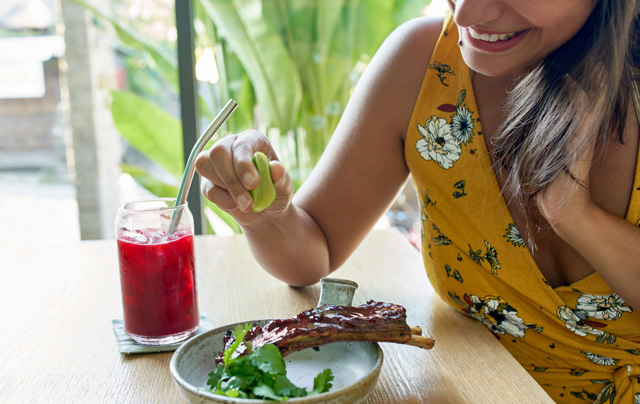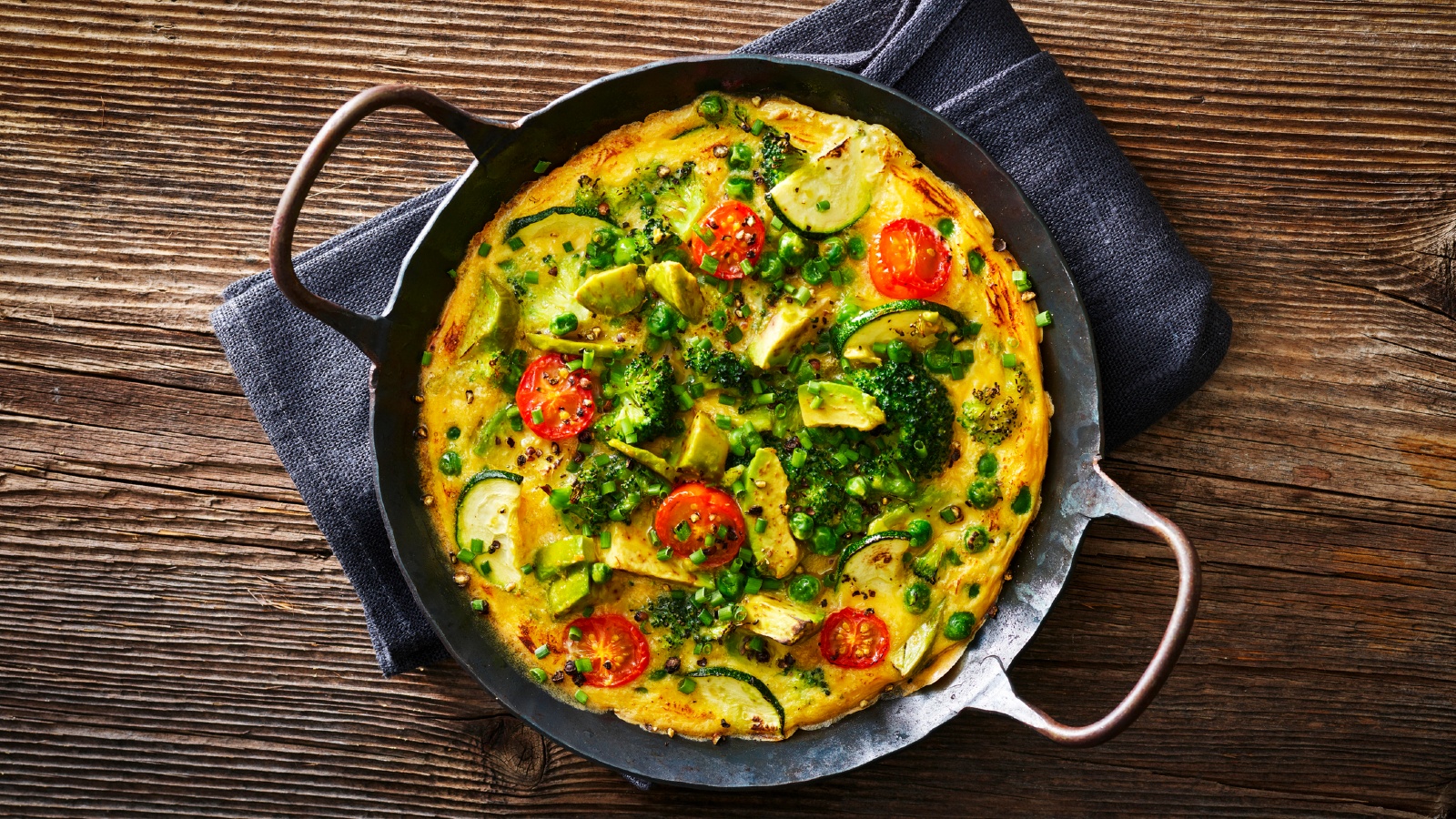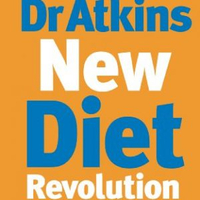What is the Atkins diet: the four phases, foods to eat, pros and cons
Arguably one of the most famous low carb eating plans, the Atkins diet has both its fans and critics. Here's what it involves.


Arguably the most famous high protein and low carb eating plans, the Atkins diet has both fans and critics.
Atkins is a low carb diet that is loved by many (it's a popular celebrity diet too) for helping followers lose weight fast. It's often compared to the ketogenic diet, but there are differences. While a keto diet sticks to a very low carb intake, Atkins dieters will add more carbs over time during the four diet phases of the plan.
For many, this quick weight loss can be very galvanizing. Nutritionist David Stache told us, "By reducing carbs so drastically, glycogen levels (stored carbs) in the body drop, which means the number on the scales drop quickly too."
However, there have been numerous studies to test the efficacy of the Atkins diet plan – with mixed results. To date, low carb diets continue to have both promising and potentially damaging results, as outlined below.
If you are wondering whether the Atkins diet plan is right for you here we explain what the Atkins diet is, how it works, what you can and can't eat. We also look at the pros and cons of following a low carb diet so you can decide if it's the right choice for you.
What is the Atkins diet?
The Atkins diet is a low carb weight loss. The idea behind the Atkins Diet is that by drastically reducing your carbohydrate intake, your body will use up your fat stores far more quickly.
The Atkins diet works in four phases. The aim says registered nutritionist Sophie Elwood, "is to put your body into a position where it begins to use its glycogen stores as energy – eventually burning fats for energy once the glycogen stores are low. It's similar to the ketogenic diet insofar as you have a higher ratio of protein and fat to carbohydrates."

Low carb diets came to the public's attention in the early 1970s when cardiologist Dr Richard Atkins' Diet Revolution: The High Calorie Way to Stay Thin Forever was published. The book went on to become one of the bestselling books in history. It wasn't until the early 2000's however that the Atkins craze really took off. This was when many celebrities, including Jennifer Anniston and Renee Zellweger, were reported to be huge fans of the diet plan.
Nearly half a century since Dr Atkins first published Diet Revolution, the Atkins diet has evolved into a global business and, today, 'Atkins' is synonymous with low carb eating. '"Over the years, the Atkins diet has become more than just a nutrition plan, growing into a brand that includes meals, books, and snacks," says David Stache, sports nutritionist at pro-athlete supplement brand Instant Knockout. "Underpinning all of these is a philosophy that to lose weight, the focus should be on low carb foods – not calories."
An updated version of the 1970s classic, this latest book was published in 2003. As well as offering more recent scientific studies, it has suggestions for meal plans and a range of case studies.
Atkins diet phases 1 to 4
As a diet the Atkins has four phases, explains David. These are:
- Induction. Less than 20g carbs per day for two weeks (also known as the Atkins 20/Phase 1)
- Second stage. Adding in more carbs, plus nuts, leafy greens, and some fruits (also known as Atkins 40/Phase 2/Balancing)
- Pre-maintenance stage. Adding in more carbs as you close in on your goal weight (also known as Atkins 100/Phase 3/Fine-tuning)
- Maintenance. Going back to eating healthy carbs in an amount your body can tolerate without gaining weight (also known as the lifelong phase).
Phase 1: the induction phase
'The original Atkins diet, now known as ‘Phase 1’ or ‘Atkins 20’ was very restrictive and difficult to maintain for a prolonged period,' says David. 'This phase is the greatest shock to the system and is all about kickstarting your weight loss journey.'
Sophie, registered associate nutritionist at Exante Diet, continues: 'This stage of the Atkins diet focuses on restricting carbs as much as possible. It's encouraged to keep carbs below 20g a day and when you might expect to lose the most weight due to the loss of water and glycogen stores.' People report losing up to 15lb (around a stone) in this time, though how much you lose depends on your current weight, health and activity levels.
Here's what you can't eat or drink in Phase 1:
- Alcohol
- Bread
- Dairy (except cheese and butter)
- Fruit (including fruit juices)
- Grains
- Starchy vegetables (e.g. corn, peas and potatoes)
- Sugar (including cakes, sweets and soft drinks)
Although Atkins isn't a calorie-counting diet it's suggested that women aim for 1,500-1,800 cals a day, and men 1,800-2,200 cals a day. 'These are within a healthy range to aim for," says Sophie. "Going over this would make it more difficult to achieve weight loss."
According to the Atkins website follow this stage for a minimum of two weeks, although the site encourages people to follow it for much longer should they wish to shed more pounds.
https://www.youtube.com/watch?v=5s10IzwlXfE
Phase 2: the second stage
This stage is a little easier. Here you "begin to reintroduce carbohydrates, allowing for between 25-45g day," says Sophie, who explains that it's recommended that more carbohydrates are reintroduced slowly to avoid gaining the weight you've lost. "It’s also important to opt for carbohydrates that will provide the most health benefits and keep you full, so eat fibrous varieties of carbs, such as oats, brown rice and wholegrains," she adds.
You can now include restricted amounts of:
- Berries
- Cream
- Leafy greens
- Legumes (including black beans, chickpeas and lentils)
- Melon
- Nuts
- Yogurt
You won't lose as many pounds during this phase. And remember, says Sophie, that throughout each phase "going over the daily calorie recommendations may impede weight loss." Stay in this phase until you're around 10lb from your goal weight.
Phases 1 and 2 are when you're most likely to give up the diet. "It's thought that the first two stages are the most challenging," says Sophie. "This could be due to the intense restrictions of carbohydrates, and it can take time for the body to adjust to burning fat for energy (ketosis)."

Phase 3: the pre-maintenance stage
Phase 3 can be a much easier phase to follow. "Again, this phase brings in more carbs, with a net of 100g per day and a wider variety of foods," says David. "This stage of fine-tuning is aimed at getting you closer to your goal weight but at a slower rate."
Now you can eat more:
- Fruit
- Starchy vegetables (such as carrots, corn, peas and potatoes)
- Wholegrains (such as barley, brown rice, oatmeal, quinoa, and wholewheat bread and pasta)
At this point you may experience some weight gain. This, says Sophie, is due to a build-up of glycogen stores and water retention. However, if you "abide by a healthy diet, full of fresh fruits and veggies, lean protein and wholegrains, and stick within the recommended calorie window, you should continue to see positive changes," she says.
This stage also prepares followers for the final stage of the diet, which focuses on maintenance.
Phase 4: maintenance – or the final, lifelong phase
This phase, explains David, is aimed at keeping you at – or close to – your goal weight, but with more carbs and food. You will continue to eat low-carb – just not as low. This amount tends to be around 100g carbs a day, though it can be slight more or less depending on how your body responds to carbs. "Here, you should be aware of the amount of carbs you can include in your diet without gaining weight," says Sophie.
David told us, 'The beauty of this phase is that should you gain weight, you can quickly take a step back to an earlier phase without much stress,"
Atkins diet pros and cons
Sophie explains that "like any diet that requires you to make drastic changes to your diet, the Atkins diet can be difficult to stick to long-term." She adds that, for some, it may even be too much to stick to short-term. "That being said, the Atkins diet does have a fairly even number of pros and cons," she says.
David adds: "It’s an easy solution to most as by cutting out carbs, they end up cutting a large portion of their calories. Plus, cutting out carbs means cutting out higher calorie, poor-nutrient-dense foods."
Pros
There are clearly defined guidelines - If you're someone who struggles to stick to a diet, the Atkins offers some handholding to keep you on track. 'The one thing many people struggle with is the inevitable waning of motivation, which in turn can lead to reckless abandonment of their nutrition,' says David. 'The Atkins diet has very clearly defined guidelines which some people require to build resilience.'
It's filling - One of the major issues with any diet is feeling hungry all the time. But a high fat, moderate protein plan such as the Atkins can be very satisfying and leaving you feeling fuller for longer. 'Protein and fat take longer to digest than carbohydrates, therefore helping you feel satiated and less likely to snack and overeat,' says Sophie.
The scales move quickly - What the Atkins is perhaps most well-known for is its quick results. When followed correctly studies found that women experienced significant weight loss at the beginning, though this does tail off. "Like any strict diet, weight loss is usually achieved," says Sophie. 'The Atkins diet focuses primarily on restricting carbohydrates so rapid weight loss in the initial phase is expected. This partly due to the loss of water and glycogen stores," she reiterates.
There's no calorie counting - Another big draw to low carb eating plans is the absence of calorie counting, which many of us find time-consuming. "To lose weight you need to be in a caloric deficit; however, many people find calorie counting tedious and frustrating," says David. "But with the Atkins diet the focus is on foods, not calories. You only to have focus on net carbs," he says.
It's tasty - Carb lovers may disagree, but as Sophie succinctly puts it: "Where there’s fat, there’s flavour.' People often rave about the Atkins because it doesn't follow the traditional diet principles of avoiding fatty or 'naughty' foods. "Often people express that they don’t feel as though they’re on a diet when they’re on Atkins," says Sophie. "Because you can enjoy a variety of foods that are filling and indulgent, like steak, pork chops and cheesy omelettes."
It can reduce symptoms of type 2 diabetes and alleviate other conditions - Studies show that following a low carb ketogenic diet "can be highly effective in improving glycemic control and weight loss in adults with T2D [type 2 diabetes]." There's also evidence that indicates that a keto eating plan can improve epilepsy as well as "acne, cancer [though there is also contradictory research to dispute this – see below], non-alcoholic fatty liver disease, polycystic ovary syndrome, and Alzheimer disease."

Cons
It can be nutritionally deficient - Nutritionists generally agree that we should eat a balanced diet that incorporates all food groups. Removing certain groups affects our energy levels and may result in nutritional deficiencies, including vital nutrients such as fibre, iron and B12, warns Sophie.
It's hard to maintain - A long-term low carb diet can complicate shared mealtimes and eating out. And, over time, restrictions can take the fun out of cooking. 'Studies have found that longer-term adherence is low,' says David. 'Mainly because who wants to live a life without carbs?!'
While it reaps swift rewards, don't expect the weight to keep falling off quite so easily. 'Initial weight loss slows very quickly and the diet becomes more difficult to maintain,' warns David.
You need to count net carbs - Ok, so you don't need to count calories as such, but you will have to count carbs. 'Having to calculate how many net carbs are in your meal can get tedious pretty quickly,' says David. He adds: 'This is a source of frustration for many who fall off the Atkins hype train.'
There are possible side effects both short-term... A low carb diet can cause unpleasant side effects. "If you’re the usual Western dieter then, physiologically, your body is going to be well used to using carbs for fuel," says David. "As the body adapts to using ketones this can lead to 'keto flu'. "This unpleasant side effect – as well as others such as bad breath, brain fog, dizziness and headaches – tend to be temporary, though some people may continue to experience them during ketosis.
Sophie adds: "You may lack energy due to the lack of carbohydrates, the body’s preferred source of energy. You could be constipated due to the lack of fibre from fruit, veg and wholegrains and the increased volume of protein and fat – which take longer to digest than carbohydrates. And you may suffer from nutrient deficiencies due to the lack of variety of fruit, veg and carbs," she explains.
Video of the Week
GoodtoKnow Newsletter
Parenting advice, hot topics, best buys and family finance tips delivered straight to your inbox.

Debra Waters is an experienced online editor and parenting writer. She also has a strong background on health, wellbeing, beauty, and food. She currently writes for Goodto and Woman&Home, and print publications Woman, Woman’s Own, and Woman’s Weekly. Debra has written for What to Expect, Everyday Health, and Time Out. In addition, she has had articles published in The Telegraph and The Big Issue.
